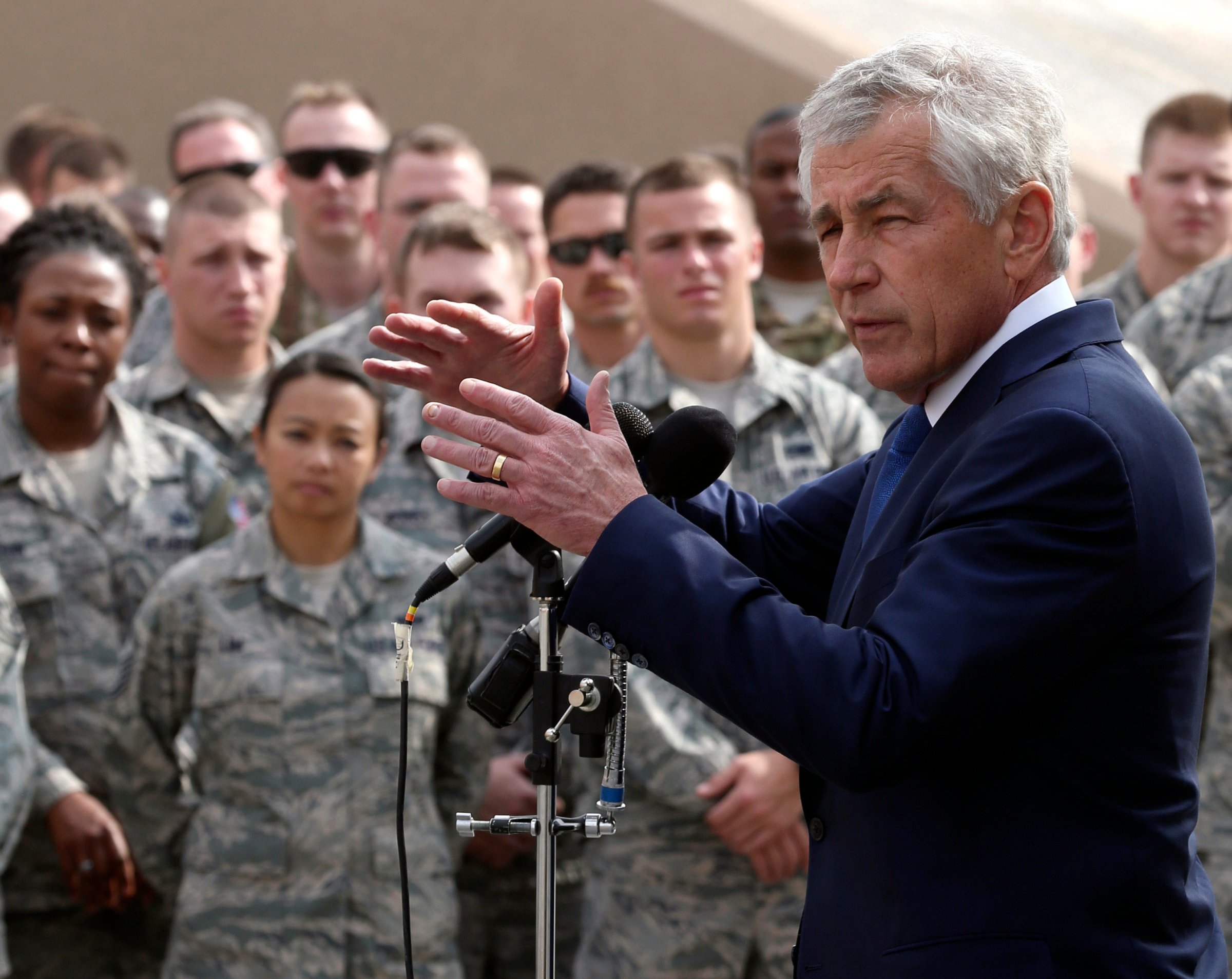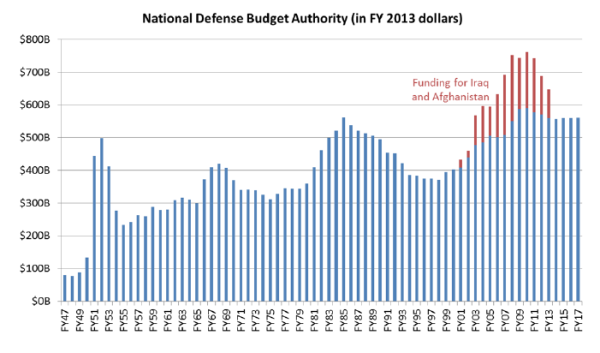
The Pentagon’s proposed 2015 budget will call for a future American Army smaller than any since before World War II, although defense spending supporting the shrunken force will remain above Cold War levels.
That is the paradox of U.S. military might in the 21st Century: the key elements of a fighting force—arms, and the personnel to operate them—have soared in per-platform and per-capita costs since the Cold War ended nearly a quarter-century ago. That means the nation is getting fewer troops and weapons for the $496 billion the Pentagon wants to spend next year.
Today’s “low-cost” warplane, the F-35, costs $160 million per copy, compared to its predecessor, the $20 million F-16. The cost per troop jumped from $55,000 in 1998 to $80,000 by 2009. Atop those rising costs, Congress has steadfastly refused to shutter unneeded military bases. All the services have said they have at least 20% more real estate—Army and Marine ranges, Air Force runways and Navy ports—than they need. Nonetheless, Congress refuses to allow any to close, fearing the impact on jobs in their districts and states. That means the nation is spending more dollars for less defense.
Given those sunk costs, there’s not a lot left for Hagel to cut. While the proposed 2015 defense budget won’t be unveiled until next week, Hagel will outline it in a speech Monday. Some of the proposals, according to Pentagon officials, include:
— The Army, current about 540,000 troops, will drop by about 20% to 440,000 over the next several years. Weaning the U.S. military off its post-9/11 war footing won’t mean the U.S. can’t wage war, it’ll just mean that it will take longer to do so, and with more casualties.
— The Army will also kill its Ground Combat Vehicle.
— The Air Force’s A-10 attack plane, long loved by grunts on the ground, is on the chopping block.
— The National Guard will surrender its AH-64 Apache attack helicopters to the active-duty force. In exchange, the Guard will get the active-duty Army’s troop=carrying UH-60 Black Hawks.
— Hagel wants to limit pay hikes for troops to 1%, while admirals and generals would see their pay frozen for a year. Housing benefits also are likely to be trimmed, Pentagon officials say.
— The Air Force, under Hagel’s plan, will replace the storied, Cold War-era U-2 spy plane with unmanned Global Hawk drones.
Hagel’s budget proposals have the support of the Joint Chiefs of Staff. In part, that’s because the Pentagon’s proposed five-year spending plan will drive like a tank through the military-spending caps set under sequestration, calling for spending $115 billion more than the law currently allows. While troops and weapons may be on the decline, the dollars remain on the march:

More Must-Reads from TIME
- Why Trump’s Message Worked on Latino Men
- What Trump’s Win Could Mean for Housing
- The 100 Must-Read Books of 2024
- Sleep Doctors Share the 1 Tip That’s Changed Their Lives
- Column: Let’s Bring Back Romance
- What It’s Like to Have Long COVID As a Kid
- FX’s Say Nothing Is the Must-Watch Political Thriller of 2024
- Merle Bombardieri Is Helping People Make the Baby Decision
Contact us at letters@time.com